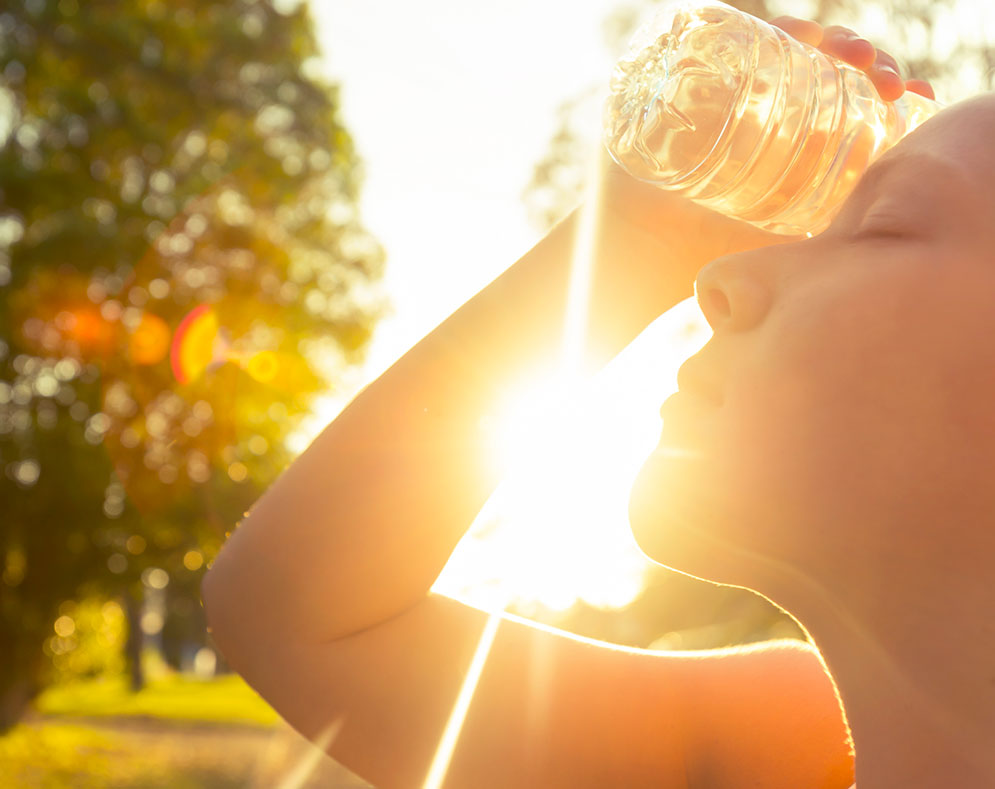news
Keeping cool in the summer heat

With the dog days of summer, how do you keep cool? The popular options include time in a pool, fans while sitting in the shade, and of course, staying in air-conditioned spaces. But what should you do when you want to keep up your exercise routine?
Dr. Lauren Tapp, associate professor of exercise science and physical education department chair at Georgia Gwinnett College (GGC) said there are things you can do to continue exercising outside and prevent heat-related illnesses.
“First and foremost, don’t exercise during the hottest times of the day, which are typically between 10 a.m. and 4 p.m.” she said. “The best time to exercise outside in the summer is early in the morning or later in the evening, when the temperatures are at their lowest.”
Along with exercising when temperatures are cooler, it’s just as important to stay hydrated.
“Make sure you are adequately hydrated before you start your exercise session, drink fluids in regular intervals during your session, and continue to re-hydrate after exercise.”
Proper hydration is essential for performance but also to avoid heat-related complications.

“Drinking water is great, but in situations where sweat rate is high, replacing lost salts is just as important,” said Tapp. “Since sweat includes loss of electrolytes like sodium, chloride, and potassium, drinking water alone could dilute electrolyte (sodium) concentration, leading to a condition called hyponatremia. Hyponatremia is the result of low sodium in your blood.”
Maintaining electrolyte balance through consumption of a combination of water and sports drinks can help prevent electrical disturbances in the heart and muscle, as well as heat-related illnesses like heat exhaustion and heat stroke.
When the body starts to have difficulty regulating core temperature, heat illness begins, first with muscle cramps, which can then progress to heat exhaustion, and then heat stroke.
“Some of the symptoms you could experience include muscle cramps, dizziness, weakness, a fast, weak pulse, nausea and vomiting,” she said. “The first course of action should be to cool the body as quick as possible through getting into air-conditioning, or application of cold towels, along with rehydration with an electrolyte drink,” said Tapp. “If symptoms don’t get better, seek medical attention.”
Heat stroke, on the other hand, is more serious and can’t be treated on your own.
“Heat stroke requires immediate emergency intervention,” said Tapp. “If you don’t get professional medical help right away, it can lead to brain damage and possibly death.”
According to the Cleveland Clinic, heat stroke symptoms include confusion, altered mental status and a high body core temperature above 104 degrees Fahrenheit. Additional symptoms can include seizures, dry, red, skin and inability to sweat.
“Adjusting to the heat takes time, about two weeks” added Tapp. The Cleveland Clinic recommends starting gradually with limited activity and increasing your exposure to the heat each day or every other day.
Tapp added that you should also plan to reduce the intensity of exercise while your body adapts.
“As with anything, it’s important to consult with your doctor if you have any medical conditions that could affect your exercise routine” said Tapp.
